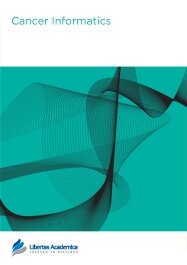

Publication Date: 27 Oct 2011
Type: Original Research
Journal: Cancer Informatics
Citation: Cancer Informatics 2011:10 259-271
doi: 10.4137/CIN.S7789

We have previously shown the hepatic gene expression profiles of carcinogens in 28-day toxicity tests were clustered into three major groups (Group-1 to 3). Here, we developed a new prediction method for Group-1 carcinogens which consist mainly of genotoxic rat hepatocarcinogens. The prediction formula was generated by a support vector machine using 5 selected genes as the predictive genes and predictive score was introduced to judge carcinogenicity. It correctly predicted the carcinogenicity of all 17 Group-1 chemicals and 22 of 24 non-carcinogens regardless of genotoxicity. In the dose-response study, the prediction score was altered from negative to positive as the dose increased, indicating that the characteristic gene expression profile emerged over a range of carcinogen-specific doses. We conclude that the prediction formula can quantitatively predict the carcinogenicity of Group-1 carcinogens. The same method may be applied to other groups of carcinogens to build a total system for prediction of carcinogenicity.
PDF (604.30 KB PDF FORMAT)
RIS citation (ENDNOTE, REFERENCE MANAGER, PROCITE, REFWORKS)
BibTex citation (BIBDESK, LATEX)
XML
PMC HTML


Compared with other journals we considered for publishing, Cancer Informatics provided extremely rapid but quality turnaround from draft submission to a flawlessly typeset final publication. Moreover, sharing the article is now as easy as sharing a link with no subscriptions required, and additional code and data files are equally accessible, supporting reproducible research. Because it has published many of our references we feel confident that our target readership must follow the journal. This is further ...

All authors are surveyed after their articles are published. Authors are asked to rate their experience in a variety of areas, and their responses help us to monitor our performance. Presented here are their responses in some key areas. No 'poor' or 'very poor' responses were received; these are represented in the 'other' category.See Our Results
Copyright © 2014 Libertas Academica Ltd (except open access articles and accompanying metadata and supplementary files.)
Facebook Google+ Twitter
Pinterest Tumblr YouTube